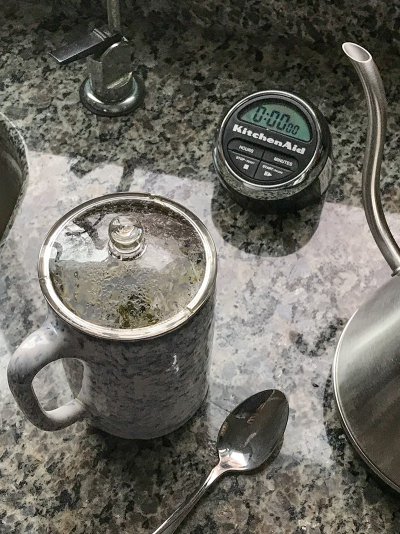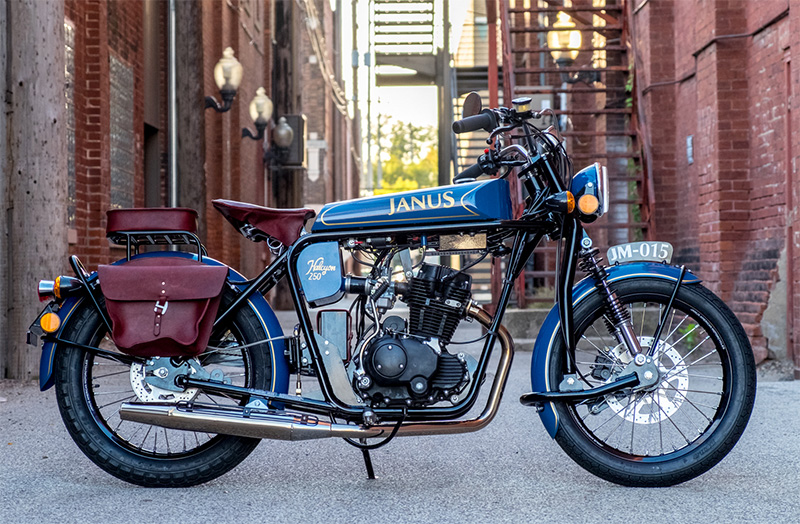I had a lovely two days off. The weather was Summery yesterday, but beautifully cool-ish and brilliantly sunny today. I feel revived and rejuvenated. We didn't even have that many firecrackers this year, praise God. Hope you had a nice Fourth, if you celebrated.

Mormon missionaries from Idaho, the Philippines, and Texas at the
Peter Whitmer Log Home Historic Site in Fayette, New York.
The roots of Mormonism are in our area.
As you know, a lot of TOP is off-topic. Photography is an offshoot of my interest in the world, and we touch on this, that and the other thing from time to time, just as I find fascination in all manner of the things that can be seen with a camera.
In 2013 I even regaled you with a story about...a washing machine.
I know—Mike, right?
Well, settle back. It's been a touch more than five years since then, and I have an update.
As you can read if you visit or revisit that link, my old machine was a 1972 Maytag made in the American small town of Newton, Iowa. I inherited it in 2000 when it was an impressive 28 years old.
Even more impressively, despite its age, I used it for 14 more years without a single problem. At that point I intended to keep it through thick and thin, and see how long it would continue to soldier on. Basically just out of a sense of gratitude. And curiosity—how long could it go on?
(Search "Elections: Anger In The Land" on YouTube if you want to see the 2009 "60 Minutes" piece involving Maytag that inspired that first post in 2013.)
But alas, I sold that house in 2014, and the real estate agent put the kibosh on my fealty to the Maytag. "The laundry machines should convey," she decreed. And so they did. Most probably the new owners of the house replaced them—they remodeled the whole house—but I haven't checked with them to find out.
Cut to now
So here's the other bookend of that sad story: my current laundry machine just came within a hair of getting totaled. By a broken power switch button. At the ripe old age of...six.
SIX.
It's a front-loading Kenmore. Here's the story as far as I've been able to figure it out: Kenmore is not a manufacturer, it's a rebrand or relabel. Various manufacturers make Kenmore products for Sears. My Kenmore was made by LG—specifically, the Home Appliance and Air Solution Division of LG Electronics, which is headquartered in Seoul, South Korea. With 82,000 employees worldwide, LG is the fourth-largest "chaebol" in South Korea. Wikipedia defines chaebol as "a large number of diversified affiliates, controlled by an owner whose power over the group often exceeds legal authority." Gulp.
Going from large to small, the power switch on my washing machine is a round plastic button on the front of the unit.
...Which broke. It stopped popping back out after you press it in. Sometimes it gets jammed and causes the machine's electronics to temporarily go haywire.
No problem, right? It's just a little button switch. Just replace it.
Not so fast.
To begin with, I should mention that the machine has already had one horrendously expensive repair, in January of '17. Something went wrong with a part called "the board" and the replacement and its installation cost more than half of the retail cost of the entire machine. A/C surges were blamed—described to me as "a known problem"—so I got a surge protector. For the washing machine.
This time, it turns out you can't just replace the faulty button. You have to replace the entirety of something called "the panel." A new "panel" and its installation was going to cost me "hundreds."
For a faulty power switch.
Yikes, right? But again, not so fast. Come to find out, "the panel" is no longer available. If the machine required a new panel, even at the cost of hundreds of dollars, too bad. Can't be had.
You're getting this, I'm sure: if anything on "the panel" breaks, a Sears Kenmore washing machine bought new in 2012 can longer be repaired at all.
Why? Well, this is supposition, not fact, but anecdotal evidence suggests that apparently "the panel" was breaking left and right on this particular model of LG front-loader two and three years into its model lifespan, and the warranty replacements were costing LG too much money. So, being a huge multinational with vast resources, LG cleverly solved its problem. It just stopped making the replacement part. Voilà, no more expense! Ain't business school grand?
So anyway, to keep my now obsolescent six-year-old washing machine limping along into the future, I've figured out a workaround. I snipped the pin off a plastic push-pin and Crazy-Glued it to the on-off switch. If I'm gentle with it and push it just so, I can get the power to turn on without having the button jam. Meanwhile, though, I have to be aware that the next time the bloody little basta stops working, chances are fair that my whole machine's goose is cooked and a new sh!##% washing machine will have to get drained out of the "non-recurring recurrables" line in the budget. (That's my brother Charlie's term, and I like it. Life is full of non-recurring recurrables. The term basically means "something unforeseen is gonna cost you a big chunk a' money at random every now and then, and you never know what.")
So what's the most reliable brand of washing machine these days? Answer: none of them. American clothes washing machines from the post-war period were made to last 20 years routinely, and often lasted for 30 years. When last seen alive, my ancient Maytag—an outlier, a survivor—was 42 years old and still going strong. It's possible it was dispatched to the landfill still working! Now, they're all designed to break within ten years. Some last longer than that, but just as many don't make it that long.
They want you to have to buy a new one. Bad for you and me and our budgets, and for the environment, but good for business.
As for me, it's absolutely true that I might be a Luddite, but give me that old-style Maytag, man. I'm an old-style American, and I still hew forlornly to the quaint old obsolescent belief that the purpose of an economy is to support a society, rather than the other way around.
Mike
"Open Mike" is the anything-goes, often off-topic Editorial page of TOP. It usually appears mid-week.
Original contents copyright 2018 by Michael C. Johnston and/or the bylined author. All Rights Reserved. Links in this post may be to our affiliates; sales through affiliate links may benefit this site.
B&H Photo • Amazon US • Amazon UK
Amazon Germany • Amazon Canada • Adorama
(To see all the comments, click on the "Comments" link below.)
Featured Comments from:
Benjamin Marks: "Arrrrgh. I say, again, 'Arrrgh.' I just replaced a Kenmore dishwasher, that had multiple problems over the ten years we owned it. The 'board' was replaced three times. The 'panel' twice. We were something like $10 away from having used so many repair services that we would have been entitled to a new machine under the terms of our old service contract.
"In fact, we spent three times as much as the retail cost of the machine on service contracts guaranteed to keep us in 'boards' and 'panels' until Kingdom Come. Until, that is, the Mother Ship announced a price increase in the service contract. 'That's It!' I cried, and pronounced that the next problem with the 'board' or the 'panel' would be the machine's last and that it would be sent to the 'farm' along with a dog of my wife's family that bit a neighbor's kid (not too badly, but still...).
"Having made this announcement, the infernal machine bided its time. It developed non-terminal ticks. It developed eccentricities. Its penchant for trouble coincided eerily with three-day weekends and times when plumbers might be less likely to be working. Christmas. It took an unexplained three day Yuletide hiatus and then, as I reached for the phone to seal its fate, mysteriously recovered. It began blinking at us from the corner of the room and emitting dulcet beeps at irregular intervals. The beeps bore an uncanny similarity in pitch and tone to the alarm indicating that our septic system pumps had failed. I would wake in the night, attuned to the house's arrhythmia, only to find that it was the dish washer beeping, muted, without pattern, in the night.
"We considered having a local shaman come and work his magic,or at least to intercede for us in reasonable tones, or as a last resort to make threats of astonishing specificity and violence. Two days before this past July 4th, the machina infernal declared its own independence. Its indicator lights started cycling (Morse code?)and its control buttons were dead to our touch. Our standby black magic of 'turning it off and turning it on again' at the basement fuse panel/junction box had no apparent effect.
"And so its fate was sealed. As of yesterday, an anodyne Bosch sits in its place, placid and silent. It is so quiet when it runs, it has to shine a little red LED towards the floor to visually announce its functioning status. 'We hardly have any trouble with these,' said the installer, in chipper tones. We shall see. We. Shall. See."
Mike replies: That comment was better than the post. :-)
russell: "Ain’t it the truth...they don’t make 'em like they used to. I have Sears washer and dryer bought in 1991 that have gone through two boys. Both boys now have their own kids. About six months back the washer would not turn on. I searched the 'Net with brand and model number. Lo and behold there are at least four sites with how-to-fix-it instructions and videos. Turned out to be the safety switch on the lid. Had to take the thing apart to replace the switch and without the video instructions I would never have figured out how to do it. A month back the dryer would only supply heat for ~five minutes—back to the 'Net. Turned out to be a couple of faulty values—$43 in parts, two hours on the garage floor and several banged knuckles later...it's fixed.
"Plus, I found $4.35 in loose change in the bowels of the machine."
Robert Harshman: "Yeah, they really used to build things to last. My Mom still has a toaster—I know, not nearly as complex as a washer, but—she got it as a wedding gift over 75 years ago. It still works just fine. Still makes toast just fine, even though it can not 'print' designs on the toast like a few modern toasters can. It simply works as intended for over 75 years and was pretty much in daily use over that time. Given my family size and number of years at home based on say 2.5 toasted pieces of bread per day that's almost 70,000 toasted successes over it lifetime.
"The toaster is in a kind of retirement now. It's still with her, but since she moved into a retirement home last year it has not been used. Once she passes away, I'll take it and see if I can get to 100 years of toast!"
kirk tuck: "Hand made Swiss washing machines are the best. Here's the link you need. Multiple kinds of currency accepted. You pay shipping. Built like an Alpa. More expensive than my car...but boy are my clothes ever clean."
Mike replies: You have one?!?
Kirk replies to Mike: "No, I have a Kenmore from 22 years ago that my repair person advised me to keep forever. Just thought the idea of a Swiss washer and dryer would so hook many of your readers that I could not resist...."
Craig Yuill (partial comment): "If you really like the old top loaders then consider Speed Queen top loaders, which are still being built in Wisconsin. I understand that they are based on an Amana model built around 1990, and know from first-hand experience that they are built like old-fashioned top loaders."
Mike replies: I'm certainly no expert in washing machines, nor an enthusiast of them, but there are enthusiasts of them, and apparently there is a tempest-in-a-teacup controversy about the new Speed Queens: the 2018 top-loaders were apparently designed to use up front-loader parts—at least according to three guys named Harley, Spats and Sharkey—and are not Speed Queens to the manner born.
 Harley relating the group "epiphany" (his word) about the 2018 Speed
Harley relating the group "epiphany" (his word) about the 2018 Speed
Queens. I would tend to trust these guys, because what's there
to gain from faking being a fanboy of washing machines?
Can't trust anything, eh?

















